Cantigas de amigo • Estampies royales
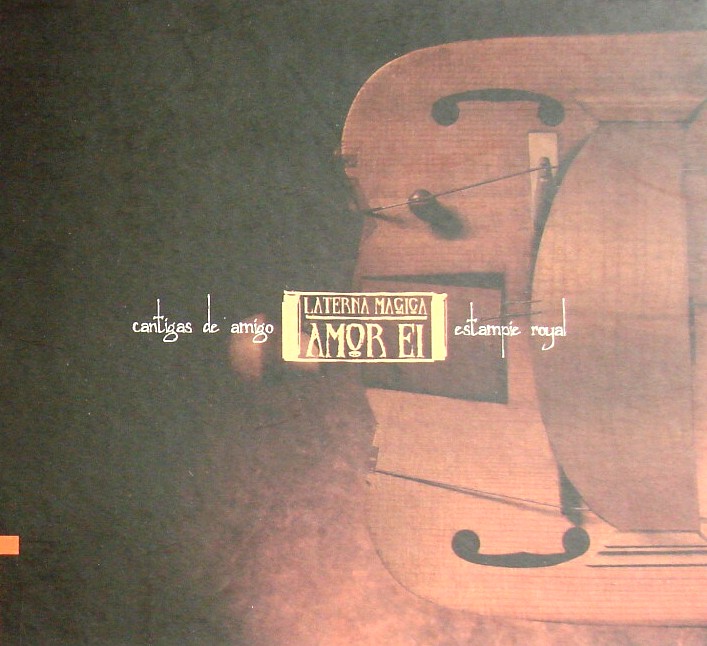
Record One R1CD008
2005
[54:05]
1. Estampie Royal [2:09]
2. Amor ei [1:47]
[Eno sagrado en Vigo]
ca VI
3. La quarte Estampie Royal [4:34]
4. Ondas do Mare de Vigo [4:37]
ca I
5. Ai Deus, se sab'ora meu amigo [3:05]
ca IV
6. Dance Real [3:30]
7. La septime Estampie Royal [2:09]
8. Mia irmana fremosa [1:35]
ca III
9. La tierche Estampie Royal [2:58]
10. Ai ondas que eu vin veere [2:08]
ca VII
11. La seconde Estampie Royal [5:12]
12. La seste Estampie Royal [1:52]
13. Mandad'ei comigo [1:43]
ca II
14. La quinte Estampie Royal [2:32]
15. Quantas sabedes amare amigo [4:56]
ca V
BONUSES
16. Ben pode Santa María guarir de toda poçon [2:37]
CSM 189
[booklet: Los set goytz recomptaren
a song from thr cycle El Llibre Vermell de Montserrat (Spain, 13th c.[sic])]
17. Chominciamento di Gioia [6:41]
Instrumental dance (Italy, 14th c.)
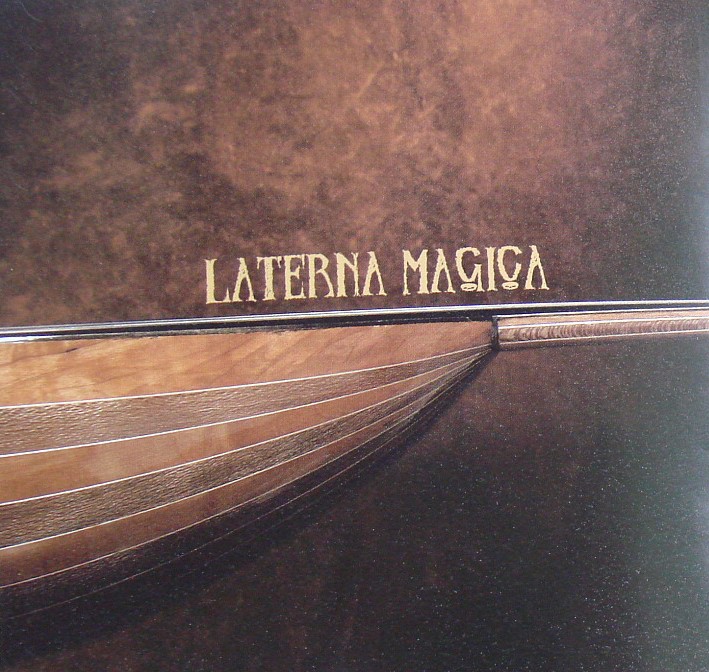
Laterna Magica
Olga Komok
voice, portable organ (Pavel Chillin, St. Petersburg, 1994), hurdy-gurdy (Peeter Talve, Estonia, 1996)
Taras Drak
voice, al-ud (Turkey, 2001), Renaissance lute (Andrey Batov, Moscow, 1990), rebab (Tadjikistan, 1988)
Alexander Manotskov
voice, darbukka (Morocco, 2000)
Matvey Lapin
fiddle (Peeter Talve, Estonia. 1998), rebab (Tadjikistan, 1989)
Rust Pozumsky
fiddle (Vaclav Svoboda, Czech Republic, 1999)
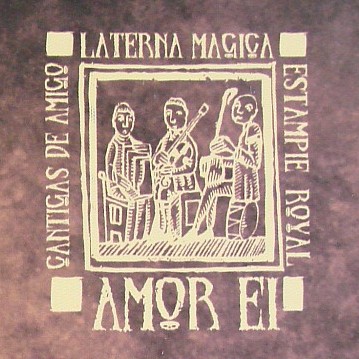
Recorded at the TUT Studio (St. Petersburg) in 2002
Sound producer: Leonid Rybkin
Mastering: Leonid Rybkin
Translated by Olga Komok
Photo: Alex FedechkoMatskevich
Design: Svetlana Shakhverdova
Producer: Alexander Kozyrev
Executive producer: Julia Soultanova
Published, marketed and promoted by RECORD ONE
We thank all the former, present and future members of the LATERNA MAGICA,
especially Dmitry Shikhardon, Petr Sergeev and Ekaterina Bonfeld,
who did a lot to give this program birth and long varied concert life.
Special thanks to Alex Fedechko-Matskevich, our
friend and wonderful photographer.
www.laterna-magica.narod.ru
www.record-one.com
© ℗ 2005 LATERNA MAGICA
© 2005 RECORD ONE
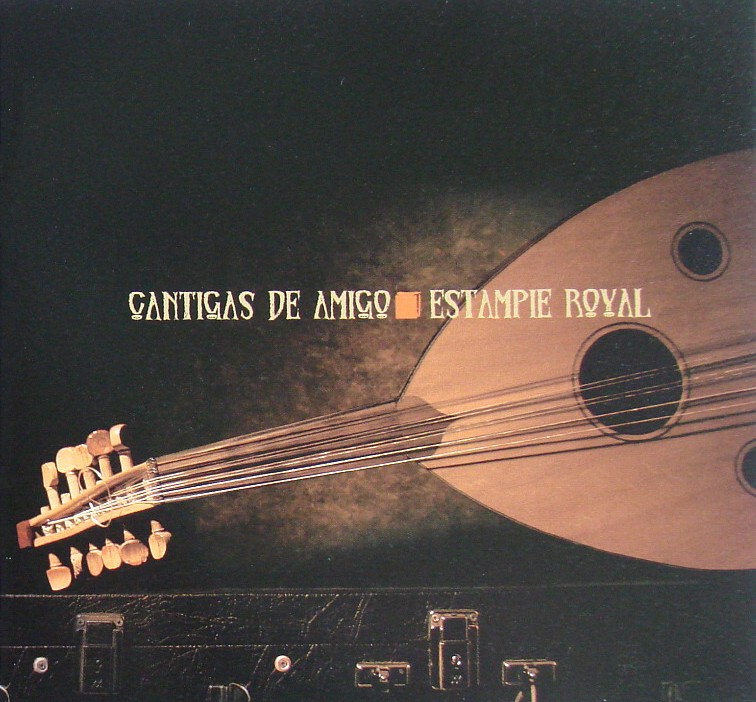
These two medieval music cycles belong to different countries and
epochs. The seven Spanish Cantigas de amigo (Songs About a Friend) were
created in the North West of Spain, in Galicia, around 1230. The eight
Estampies royales were written down a century later in Paris. Scanty facts
of these cycles' histories do nothing but underline their diversity.
The cantiga de amigo is a traditional love song genre, written on
Galician Portuguese dialect — the most popular literary language
of the medieval Spain. Following poetical themes and forms of
troubadours, Spanish men through the whole 13th century wrote lyrics in
the name of women. Compositions of cantigas de amigo are both simple
and complicated: stinginess of semantic resources is lived down by
meditative structures, based on rotation of words and motifs. Among all
the existing cantigas de amigo only one cycle of seven songs survived
with music (one of these songs is traditionally sung to a Galician folk
tune). This cycle is attributed to Martin Codax , of whom virtually
nothing else is known. It is clear though, that these cantigas were
written not in the town of Vigo, situated on the its bay. The narrow
bay of Vigo binds together the songs' content, it is their main
addressee and the only location: a heroine goes to the waves of Vigo to
meet her sailor-lover, to mourn her sorrow, to dance alone. Music
language of cantigas, somewhat unexpectedly for the North of the
country — the bastion of celts and the Spanish Christian culture
— keeps the sign of melismatic and spicy Moorish tradition.
French estampies royales are instrumental dances, created in a form and
tradition widely circulated in the 14th century Europe. These
complex compositions are based on the typical medieval form of
sequence: each new part of the dance (pars) is repeated two times,
everytime with specific (equal over the whole dance) ending —
"ouvert" for the first, "clos" for the last time. This anonymous cycle
was written in Paris, one of the main cultural centres of medieval
Europe. The survived title suggests that the dances were intended for
the court festivities. All the estampies royales — slow
processions or fast round dances — have quite simple and
expressive melodies, with no clear Oriental tint in them.
Combination of two such different cycles gives an opportunity not only
to accent the peculiarities of each one, but also to find in them the
chain of rhythmic resemblances and melodic ties so characteristic to
the medieval music as a whole.
Olga Komok
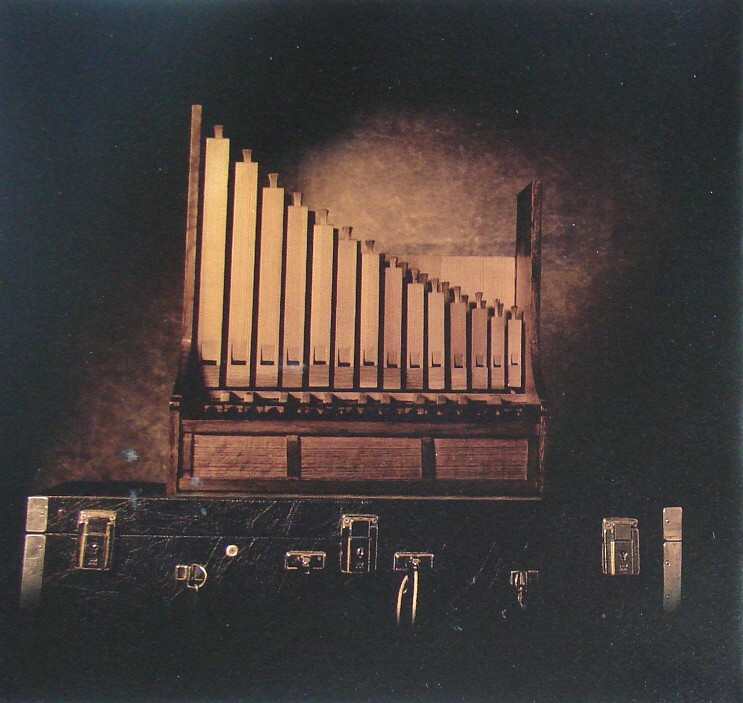
Ensemble LATERNA MAGICA, or "Magic Lantern" (St. Petersburg, Russia),
specializes in performing Western-European music of the Middle Ages and
Renaissance. LATERNA MAGICA combines original sounds of the period
instruments with experiments in interpretation. The ensemble's work is
based on two principles: freedom as a consequence of the performers'
experience in playing Classical, Baroque, Rock, Folk, and Jazz music;
and self-restriction resulting from the keen style feeling.
Non-academic voices add original color to the ensemble's sound.
Treating medieval music as a vivid art, which is broader than museum
reconstruction, the ensemble involves medieval repertoire in the
various contexts of contemporary music life.
Since its foundation in 1998, LATERNA MAGICA became well-known not only
in St. Petersburg, but also in Russia, Estonia, Latvia, Poland, and
Belarus. The ensemblе took part in several international Early Music
festivals — in Tartu (Estonia, 1999, 2000), Moscow (1999), St.
Petersburg (2000); it also gave concerts at the "Chamber music
festival" in Polotsk (Belarus, 2000) and the festivals "Jazz Spring",
"Window to Netherlands" in St. Petersburg (2000, 2001). In October 2001
the ensemble undertook its first big tour in the United States. Since
2000, LATERNA MAGICA is cooperating with the St. Petersburg Foundation
of Culture and Arts "The PRO ARTE Institute", preparing original
programs of medieval and contemporary music.